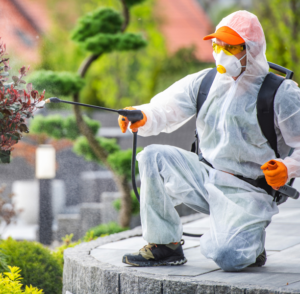Air Duct Cleaning involves removing dust, dirt, and debris from your home’s ductwork. This can be done using specialized equipment. It’s important to hire a certified contractor who follows industry best practices. Click the Visit Website to learn more.
A technician will begin by making sure all of your supply vents are closed to maximize negative pressure. They’ll then clean each vent and duct one at a time.

Ducts can hold a lot of pollutants, including dust mites, pet dander, mildew, and mold spores. These contaminants can become airborne and circulate throughout the home. They can irritate the throat, nose, eyes, and sinuses. They can also aggravate existing allergies and asthma symptoms. Over time, they can even weaken the immune system.
Skin problems are another concern of dirty ducts. The allergens found in dirty ducts can trigger a variety of conditions, such as eczema, dermatitis, and itching. These issues can be even more severe if you have sensitive skin. Fortunately, scheduling regular duct cleaning can eliminate these problems.
Dirty ducts can also cause respiratory issues. Inhaling the particles that blow out of dirty ducts can irritate the throat, nose, and sinuses. This can lead to coughing, sneezing, and sore throat. These problems can even worsen existing respiratory conditions.
One of the most common problems caused by dirty ducts is chronic sinusitis. This condition can cause a variety of symptoms, including a sore throat, headaches, fatigue, and sinus congestion. If you have sinusitis or a family member with this issue, cleaning your ducts can help to relieve the symptoms.
Ducts can house a number of germs and bacteria, including bacteria, fungus, and mold. These contaminants can then blow through the ducts and into your home, polluting the air quality and irritating your lungs and respiratory tract. The fungus and mold spores can also lead to respiratory infections, such as bronchitis and pneumonia.
The best way to know if your ducts are dirty is to do a visual inspection of the ducts and vents in your home. If you notice a large amount of dust or a musty odor, this is a sign that it’s time to schedule duct cleaning. You can also look for signs of sneezing or other respiratory issues that are unrelated to allergies or colds. A professional can inspect your ducts and then clean them using specialized equipment. The process includes sweeping the ducts and vacuuming the vents to remove the contaminants. They can also use compressed air equipment to dislodge stubborn debris.
They Can Reduce Airflow
Over time, dust, pet dander, mold spores, bacteria, and other airborne pollutants can build up on duct surfaces. These contaminants are then recirculated throughout the home – a process that happens five to seven times a day. If you or someone in your household suffers from allergies, asthma or another respiratory condition, these pollutants can aggravate symptoms. A periodic duct cleaning can help prevent health-related issues and improve indoor air quality.
Dirty ducts also collect a lot of moisture, which can lead to the growth of mold and other unhealthy microorganisms. These organisms release unpleasant and even toxic odors into the air, which can linger in your home. Mold and other spores can also clog filters, reducing airflow and decreasing your system’s efficiency.
The best way to avoid dirty ducts is to hire an experienced, qualified professional for regular cleaning and visual inspection. Look for a company with a strong reputation and a good track record, and always steer clear of companies that advertise “$99 whole house specials” or other sales gimmicks. Also, ask the company for proof of licensing and insurance.
During the duct cleaning process, you should clear a path for the technician to access all of your vents and ensure that they aren’t blocked by furniture or other clutter. The technician will need to access your air handler and plenums, which are typically located near the furnace in the basement, garage, attic or utility closet.
If your home has an insect infestation, it’s a good idea to clean your ductwork as soon as possible to prevent further contamination. Insects and rodents often take up residence in ductwork, and their droppings can leave foul-smelling odors and a wide range of dangerous bacteria behind.
If your ducts are dirty, your air filter will need to be changed more frequently. This can increase the cost of operating your heating and cooling system, and it can reduce the efficiency of your equipment. In addition, it can cause the air conditioner to overwork, which can damage it or reduce its lifespan. A professional technician can diagnose problems and recommend appropriate solutions.
They Can Decrease Comfort
When dirt accumulates in ductwork, it is blown throughout the home as air is circulated by the HVAC system. Eventually, the debris will get into the nasal passages and sinuses where it can cause inflammation and irritation. This can result in headaches, fatigue and a runny nose. It can also aggravate existing allergies and respiratory issues.
The best way to avoid these problems is by having your ducts cleaned regularly. This will ensure that the dust and allergens are not blown into the home every time the system runs. It is especially important to have your ducts cleaned if someone in your family has asthma, allergies or other respiratory problems.
Visible dust around your vents or in the air registers is a clear sign that you should have your ducts cleaned. It may also indicate that your furnace filter is too small or not being changed frequently. If you notice any of these signs, it is a good idea to contact a professional for an estimate.
It is also important to choose a reputable contractor. Look for one that is certified by the National Association of Duct Cleaners (NADCA) and has a good track record of customer satisfaction. You should also ask about their process and what they include in the service. Make sure they are using source removal techniques and not just blowing the dust out of your ducts.
You should prepare your house for the duct cleaning service by clearing all vents and making sure they can be easily accessed. You should also move any furniture that is blocking the vents or covering them with a tarp. If you have a child’s bed or another sensitive item directly under a vent, you should move it away from the area to protect it.
The duct cleaning professional will use specialized tools to remove the buildup and restore the ducts to a clean state. This will improve the indoor air quality and help the HVAC system work more efficiently. In the long run, this can reduce energy bills and prolong the system’s lifespan.
They Can Increase Energy Bills
If the air ducts in your home are dirty, it is likely that your energy bills will be higher. This is because the HVAC system will have to work harder to compensate for reduced airflow and increased resistance from the contaminated ductwork. A cleaning will help reduce these problems and thus will save you money in the long run.
Dirty ducts are also a common source of unpleasant odors. These odors are usually caused by mold and other bacteria that accumulate over time. This is not good for anyone’s health, especially those with allergies or asthma. Cleaning your ducts will eliminate these odors and restore the fresh smell to your home.
When choosing an air duct cleaning company, make sure they follow the National Air Duct Cleaners Association’s (NADCA) standards. This ensures that they will use effective methods and techniques to get your ducts as clean as possible. You can check NADCA’s website for a list of approved companies.
You should also be aware that the cost of duct cleaning varies depending on the size and condition of your ductwork, as well as other factors such as the presence of mold or vermin infestations. It is important to find a reputable and experienced company that provides clear pricing and excellent customer service.
It is recommended to have your ducts cleaned every 3 to 5 years. This frequency will help you avoid a buildup of dust, debris, and other contaminants that can interfere with airflow and your HVAC system’s efficiency. If you have pets, suffer from seasonal allergies, or live in a particularly dusty environment, it may be necessary to have your ducts cleaned more frequently.
When selecting a duct cleaner, be sure to choose one that follows NADCA’s standards and has qualified employees. They should be able to explain their processes and answer any questions you may have. They will need access to your vents, so be sure that they are not blocked by furniture or other objects. Also, make sure to clear a path to the air handler and plenums, which are usually located near your furnace in the basement, garage, attic, or utility closet.








